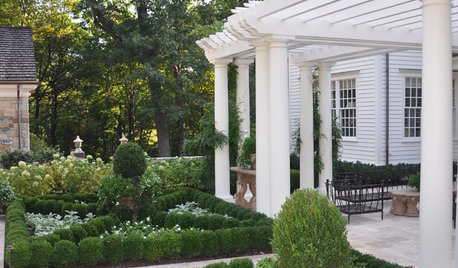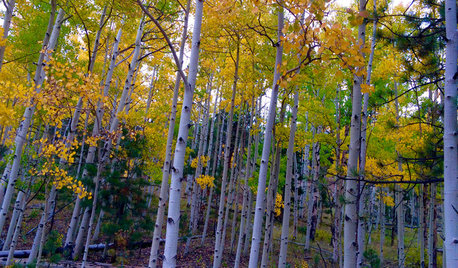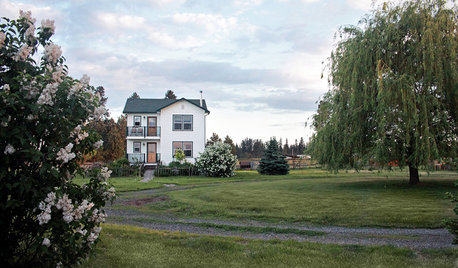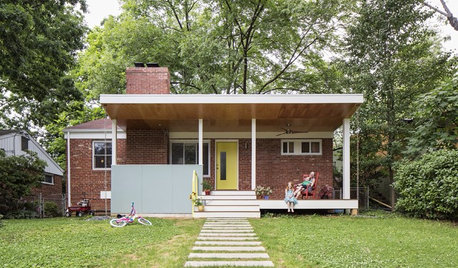My mom and I both love to grow corn. There's something amazing and magical about those tall wavy plants and the ears that spring into physicality before your eyes. It's American as can be; the cultural significance is as mysterious and nuanced as crop circles.
And, according to my favorite garden guru, Steve Solomon, it's a total waste of money. In his vegetable gardening tome -- targeted at growers in my region -- he has a list of the best crops to grow for which your investment of space, seed, water and compost money will pay off. Some vegetables, he says, can be purchased extremely cheaply in season from local farmers; corn is one of those. Ears are as cheap as 10 cents each when they all come ripe at once in August or September; but the plants (as I've learned) strip the soil of nutrients and take up a lot of space and sunlight.
The best crop to grow for your money, it is almost universally agreed-upon, is the tomato. Even at the height of the season, when tomatoes are coming ripe faster than zucchinis, a huge heirloom tomato can be five whole dollars -- or more, sometimes, for organic or especially in-demand varieties. And growing them yourself doesn't take a lot of space; the plants are in the ground from May, or even as late as June, to September -- and aren't too taxing on the soil. You can easily pull them up and plant garlic cloves in their stead to harvest when the baby tomatoes go in next season. And, if you're even the least bit handy in the kitchen when it comes to preserving, you cannot grow a bumper crop too immense to preserve and use throughout the year. Tomatoes can be canned into sauce, chutney, ketchup, marinara, or whole; they can be roasted and frozen or set on the windowsill green to eat later when they're fully ripe.
At a few dollars for even the fanciest plant, and way less if you grow your own from seed (or save seeds), the payoff can be enormous -- as much as $100 in value for a $2 investment. If this were Wall Street, you'd be spending your summers in a 10,000-square-foot home in the Hamptons for this kind of return. But we know you'd rather spend them in the garden of your own humble backyard...
Arugula is the wild secret of the home gardening set. Fantastically expensive in the grocery stores and at the farmer's markets, arugula is easy to grow at home in most climates and will re-seed exuberantly; for some of us, arugula can even be grown most of the year. Even its blossoms, sometimes known as arugula raab, are delicious and unusual. It grows quite easily from seed, making the investment almost nothing over the life of your garden (you'll have to fight it not to sprout up in the same spot next year). At something like $10 a pound -- or even more -- if you buy the leaves freshly spritzed by the produce department folks, arugula is a garden no-brainer.
Even patio and balcony gardeners can grow herbs, and though many varieties don't do well when grown from seed, others are such hardy perennials that they take virtually no care at all -- ever. Even at $1.25 or $1.50 per start, herbs like cilantro and basil can produce three or four times that in retail cost. Others, like thyme and rosemary and sage, might cost four or five dollars for starts, but will last for decades with a little weeding now and again.
Surely, herbs are expensive, usually prices at anywhere between $1 and $5 for a few ounces (often sold in one of those terrible clamshell packages -- the ones curbside recyclers won't even pick up). It's clear that growing them in your garden is highly preferable. But it's not just a pure cost analysis; there's also the fact that you rarely use as much of one herb as comes in a package. It's so much less pressure on the cook to use it before it goes bad; instead, pick just as much as you want and use a half-dozen herbs at once! The ill-advisedness of the package size for this crop can not be underestimated as a source of wallet pinching, and the frugal cook's stress levels.
Sweet peppers are another crop whose small profile and high grocery store prices make it a garden winner. Like tomatoes, sweet peppers are great for preserving and can be simply roasted whole and frozen (or turned into chutneys, relishes, or other good things in jars). While bargains can be occasionally had on the green varieties, red and yellow peppers are typically a few dollars per pound, because they have to be left on the vine longer to ripen to full sweetness. In the backyard vegetable garden, however, little cost beyond an occasional watering goes in to the benign neglect necessary to sweeten the vegetables. With plants that are easily grown from seed, sweet peppers can yield several dollars' in produce per plant for a cost of pennies.
If you're in this garden thing for the long haul, fruit trees are a beautiful long-term investment. Your first few years will be disappointing; this year, for instance, my Montmerency cherry crop was so small, I couldn't even come up with anything to do with the pound or so, and let them spoil. But at $5 or $6 a pound for the fruit, by 2015 I'll be pulling in crops worth hundreds; with no additional investment beyond a shovelful of compost now and again.
The best way to figure out which garden crops would make sense for you is to figure out where you're spending the most money at the farmer's market or produce department. If you're regularly racking up $10 a week in herbs or stone fruit, it's an easy choice to buy seeds, plants or trees and, with a little time and minor attention, soon you'll be worrying not about how you'll afford your groceries, but how you're going to use all this great garden produce! And that's a great place to be.
Here is a link that might be useful: Garden Crops That Make Financial Sense













denninmi
makete
Related Discussions
Planning ahead for new garden: crop rotation question (picture)
Q
Rules that make sense
Q
supports for vining crops (melons and squash)
Q
Homesteading & the financial shake-up
Q
jcatblum
Dan _Staley (5b Sunset 2B AHS 7)
ltilton
wayne_5 zone 6a Central Indiana
zzackey
Joe1980
feijoas
t-bird
cozy
Ispahan Zone6a Chicago
jrslick (North Central Kansas, Zone 5B)
wizzard419
planatus
tempusflits
pnbrown
glib
Jeremy_Jay
nullzero
denninmi
spiced_ham
macky77
hepatica_z7
jolj
pnbrown
defrost49
makete
pnbrown
lucillle
spiced_ham
glib
Tiffany, purpleinopp Z8b Opp, AL
GreeneGarden
johngreenhand
amyamybobamy